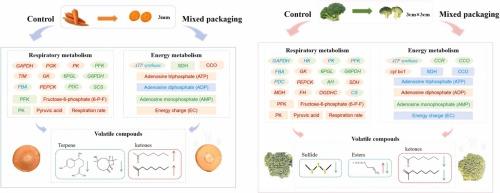Interfacial antagonism between goethite and ZnO nanoparticles modulates organic phosphorus fate in aquatic systems
IF 11.3
1区 环境科学与生态学
Q1 ENGINEERING, ENVIRONMENTAL
引用次数: 0
Abstract
Iron (hydr)oxides and phosphorus interactions critically influence aquatic biogeochemical cycles, yet the role of engineered nanoparticles in modulating these processes remains underexplored. This study systematically investigates how zinc oxide nanoparticles (ZnO NPs) and goethite (Gt) synergistically regulate the transformation of five representative organic phosphorus (OP) compounds—inositol hexaphosphate, nucleic acids, 2-aminoethylphosphonic acid, adenosine triphosphate, and creatine phosphate. Gt alone exhibited limited OP degradation (14.7 %–39.2 % over 80 h). In contrast, co-treatment with ZnO NPs enhanced degradation efficiencies to 20.3 %–46.4 %, while sequential addition of ZnO NPs prior to Gt further increased mineralization to 37.1 %–75.6 %, highlighting the importance of treatment sequence. Mechanistically, photogenerated hydroxyl (·OH) and superoxide (·O2¯) radicals drove OP transformation in ZnO NP systems. Surface and molecular characterizations (XPS, AFM, synchrotron-based XANES) confirmed that OPs formed bidentate inner-sphere complexes with Gt, which limited photoreactivity by attenuating light penetration. Sequential addition of ZnO NPs or Zn2+ substitution circumvented Gt–OP–Zn complex formation, significantly improving OP mineralization. Adsorption kinetics and isotherm modeling revealed Gt’s dominant role in OP sequestration via inner-sphere complexation, which inhibited radical access to surface-bound species. These findings underscore the antagonistic yet tunable interplay between Fe oxides and photocatalytic nanoparticles in regulating phosphorus fate, offering valuable mechanistic insights for the design of nanomaterial-enhanced strategies to mitigate OP-driven eutrophication in aquatic environments.

针铁矿和氧化锌纳米颗粒之间的界面拮抗作用调节水生系统中有机磷的命运
铁(氢)氧化物和磷的相互作用严重影响水生生物地球化学循环,但工程纳米颗粒在调节这些过程中的作用仍未得到充分探索。本研究系统地研究了氧化锌纳米颗粒(ZnO NPs)和针铁矿(Gt)如何协同调节五种具有代表性的有机磷(OP)化合物——六磷酸肌醇、核酸、2-氨基乙基膦酸、三磷酸腺苷和磷酸肌酸的转化。单独Gt在80 h内表现出有限的OP降解(14.7%-39.2%)。相比之下,与ZnO NPs共处理可将降解效率提高到20.3% ~ 46.4%,而在Gt之前依次添加ZnO NPs可进一步将矿化提高到37.1% ~ 75.6%,突出了处理顺序的重要性。机理上,光生成的羟基(·OH)和超氧化物(·O2¯)自由基驱动ZnO NP体系中OP的转化。表面和分子表征(XPS, AFM,基于同步加速器的XANES)证实OPs与Gt形成双齿内球配合物,通过衰减光穿透来限制光反应性。顺序添加ZnO NPs或Zn2+取代可以避免Gt-OP-Zn配合物的形成,显著提高OP的矿化程度。吸附动力学和等温线模型表明,Gt通过球内络合作用在OP固载中起主导作用,抑制自由基进入表面结合的物质。这些发现强调了铁氧化物和光催化纳米颗粒在调节磷命运方面的拮抗但可调节的相互作用,为设计纳米材料增强策略以减轻水生环境中op驱动的富营养化提供了有价值的机制见解。
本文章由计算机程序翻译,如有差异,请以英文原文为准。
求助全文
约1分钟内获得全文
求助全文
来源期刊

Journal of Hazardous Materials
工程技术-工程:环境
CiteScore
25.40
自引率
5.90%
发文量
3059
审稿时长
58 days
期刊介绍:
The Journal of Hazardous Materials serves as a global platform for promoting cutting-edge research in the field of Environmental Science and Engineering. Our publication features a wide range of articles, including full-length research papers, review articles, and perspectives, with the aim of enhancing our understanding of the dangers and risks associated with various materials concerning public health and the environment. It is important to note that the term "environmental contaminants" refers specifically to substances that pose hazardous effects through contamination, while excluding those that do not have such impacts on the environment or human health. Moreover, we emphasize the distinction between wastes and hazardous materials in order to provide further clarity on the scope of the journal. We have a keen interest in exploring specific compounds and microbial agents that have adverse effects on the environment.
 求助内容:
求助内容: 应助结果提醒方式:
应助结果提醒方式:


